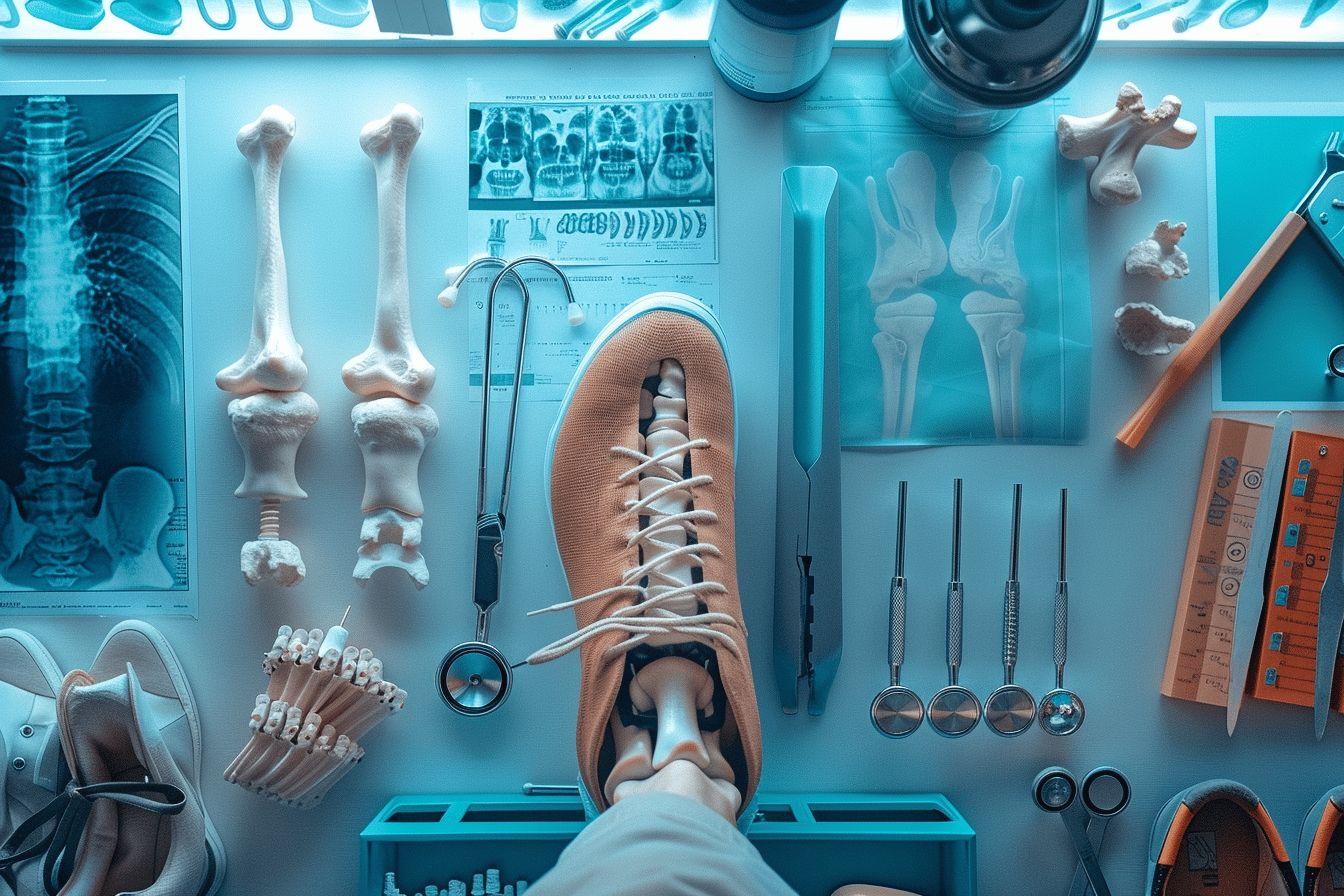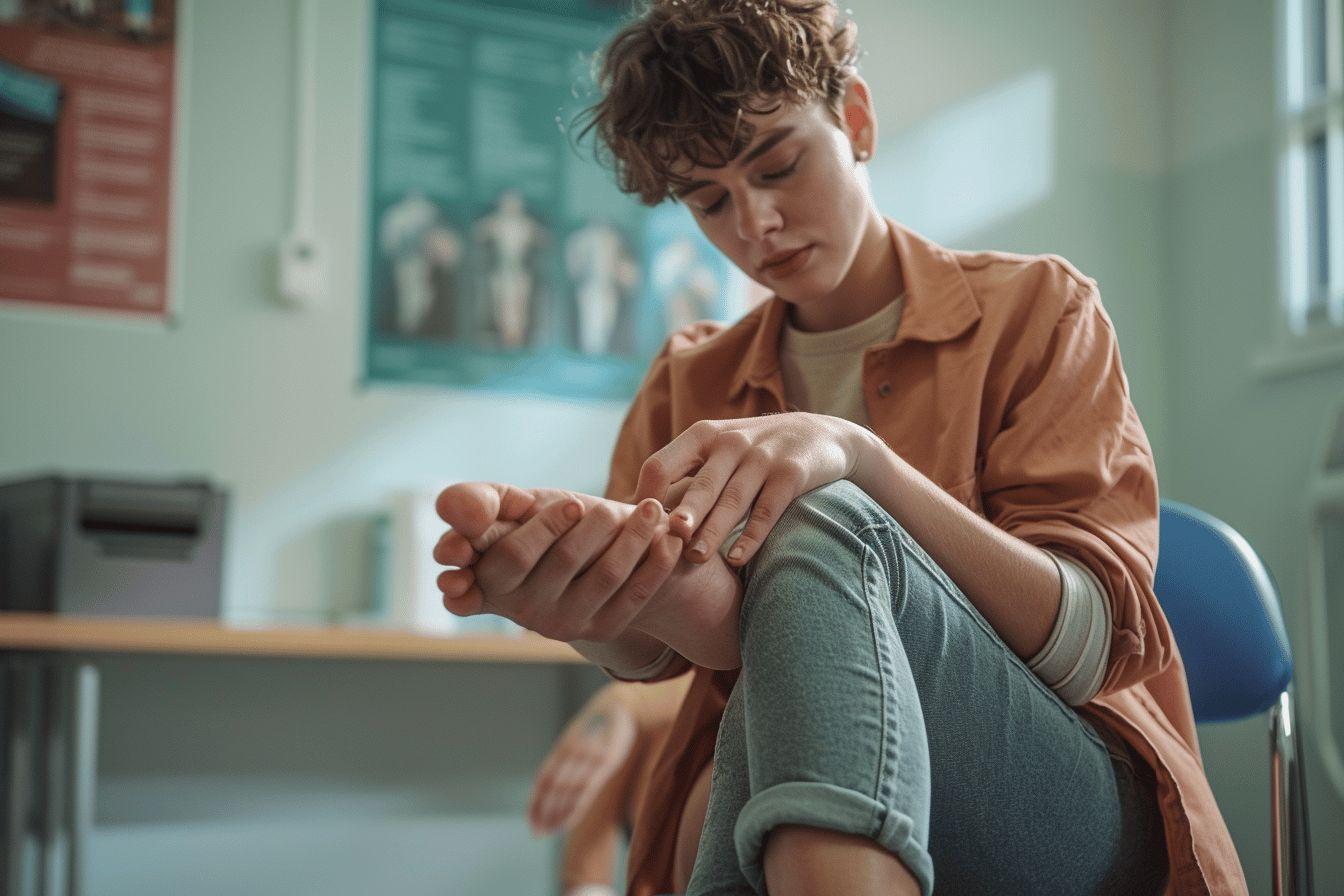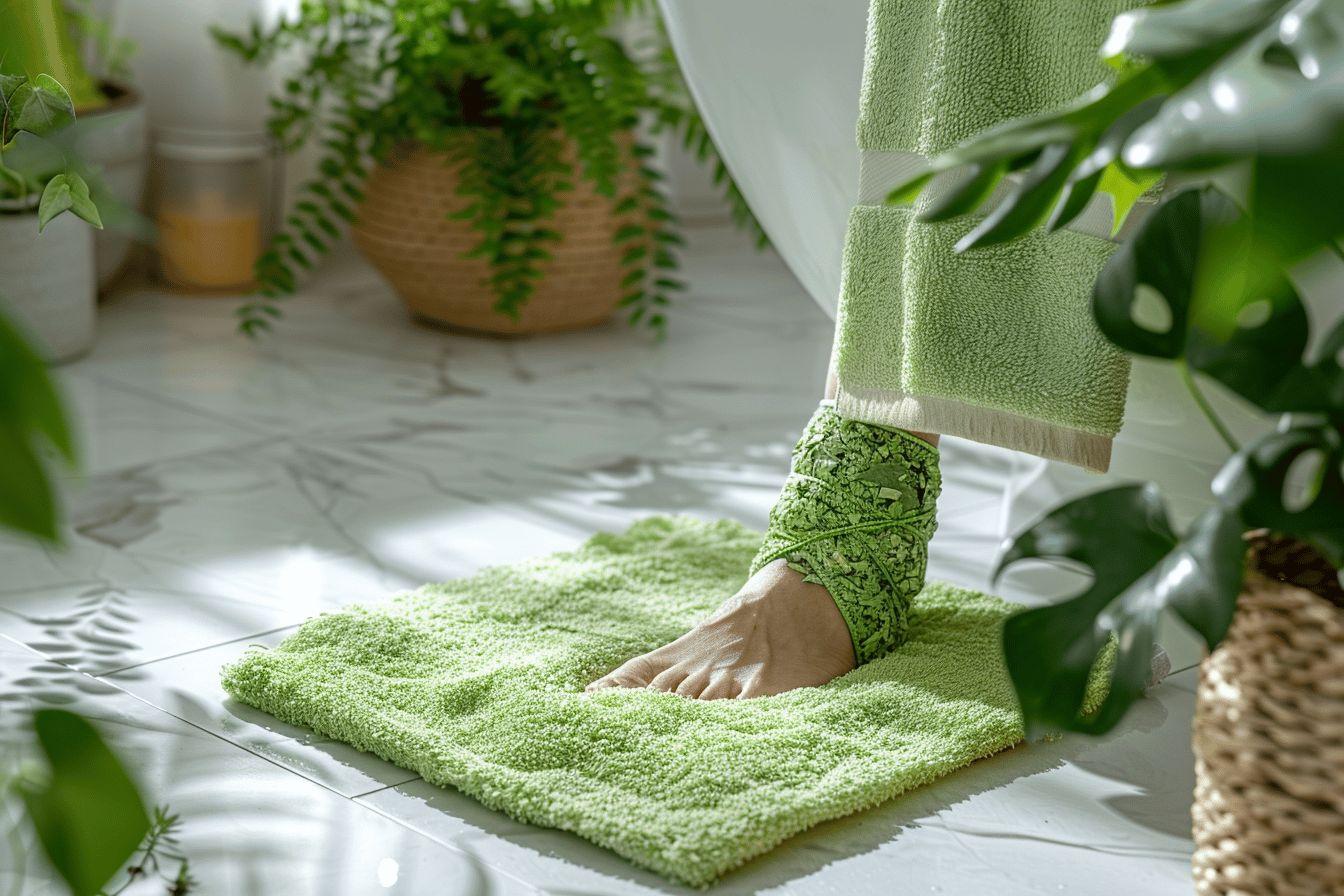Hallux valgus, or "bunion," is a deformity of the big toe that can be treated using various methods. Here are the key points:
- Conservative methods: appropriate footwear, orthotics, and specific exercises
- Medical treatments: anti-inflammatory injections and surgery as a last resort
- Prevention: healthy lifestyle, strengthening exercises, and careful choice of footwear
- Future prospects: minimally invasive techniques and cutting-edge technologies such as 3D printing
Hallux valgus, commonly known as a "bunion," is a deformity of the big toe that can cause discomfort and pain. Many people wonder if it is possible to correct this deviation. Let's explore together the different methods to correct this deformity and regain healthier feet.
Understanding Hallux Valgus and Its Causes
Hallux valgus is characterized by a deviation of the big toe toward the outside of the foot, forming a bony protrusion on the inner side. This deformity can be caused by several factors, including:
- Genetics and family predisposition
- Wearing unsuitable shoes, especially high heels
- Repeated trauma or injury to the foot
- Certain diseases such as rheumatoid arthritis
- Improper posture or muscle imbalance
It's worth noting that hallux valgus can worsen over time if no corrective measures are taken. This deformity can not only affect the aesthetics of the foot, but also cause pain and limit mobility. In some cases, it can even lead to other health problems such as claw toes, requiring specific corrective exercises.

Conservative Methods to Straighten a Hallux Valgus
Before considering surgery, there are several non-invasive approaches to correcting bunions. These methods aim to relieve pain, slow the progression of the deformity, and, in some cases, improve the alignment of the big toe.
Choosing the right shoes is essential. Choose models with a wide toe box, a low heel, and good support. Custom-made orthopedic shoes can provide additional support and reduce pressure on the affected area.
Corrective orthotics and splints play a crucial role in correcting bunions. Worn regularly, they can help gradually realign the big toe. There are different types of orthotics:
| Type of orthosis | Use | Benefits |
|---|---|---|
| Toe separators | Between the big toe and second toe | Maintain alignment during the day |
| Night splints | During sleep | Gradual correction of deformity |
| Orthopedic insoles | In shoes | Pressure distribution and support the arch |
Physical therapy and specific exercises can also help straighten a bunion. Strengthening and stretching exercises for the foot and ankle muscles can improve flexibility and alignment of the big toe. For example, the "pencil" exercise involves picking up a pencil with your toes, which strengthens the intrinsic muscles of the foot.
Medical and Surgical Treatments to Correct a Bunion
When conservative methods are insufficient, more advanced medical treatments may be considered. Consulting a podiatrist or specialized orthopedic surgeon is then recommended to evaluate the available options.
Anti-inflammatory injections can temporarily relieve pain and reduce inflammation around the affected joint. On the other hand, they do not correct the deformity itself and are generally used in conjunction with other treatments.
Hallux valgus surgery remains the most effective option for permanently correcting the deformity. Several surgical techniques are available, the choice of which depends on the severity of the deformity and the patient's general condition. The main procedures include:
- Osteotomy: correction of the metatarsal bone angle
- Arthrodesis: fusion of the joint to stabilize the big toe
- Exostosis resection: removal of the bony prominence
- Tenotomy: sectioning or lengthening of the tendons to reduce tension
It should be noted that post-surgical recovery can take several weeks or even months. Proper rehabilitation is essential to optimize results and prevent recurrence.
Prevention and Maintenance of Healthy Feet
Prevention plays a crucial role in foot health. To avoid the onset or worsening of bunions, it is recommended to:
Adopt a lifestyle that promotes foot health. This includes maintaining a healthy weight, eating a balanced diet rich in nutrients essential for bone health, and engaging in regular, appropriate physical activity.
Performing daily foot strengthening and stretching exercises can help maintain flexibility and strength in muscles and ligaments. These exercises are particularly beneficial for preventing not only hallux valgus, but also other podiatric problems such as plantar fasciitis.
Choosing the right shoes for everyday wear is essential. Choose comfortable models that offer good support and ample space for your toes. Avoid shoes that are too narrow or with high heels, which can increase pressure on the ball of the foot.
Finally, regular monitoring of your feet and preventive consultations with a podiatrist can help detect and treat any abnormalities early before they worsen.
Future Outlook for Hallux Valgus Treatment
Research in the field of podiatry continues to evolve, offering new perspectives for the treatment of hallux valgus. Minimally invasive techniques and innovative materials are being developed to improve the effectiveness of surgical procedures while reducing recovery time.
The use of cutting-edge technologies such as 3D printing now makes it possible to create custom-made orthotics and shoes, perfectly adapted to each patient's unique morphology. These advances promise a more personalized and effective approach to correcting hallux valgus.
In summary, although it is difficult to completely straighten hallux valgus without surgery, many options exist to relieve symptoms and improve the quality of life of those affected. A multidisciplinary approach, combining conservative treatments, medical supervision, and, if necessary, surgical intervention, offers the best chance of success in managing this common foot deformity.





Leave a comment
This site is protected by hCaptcha and the hCaptcha Privacy Policy and Terms of Service apply.